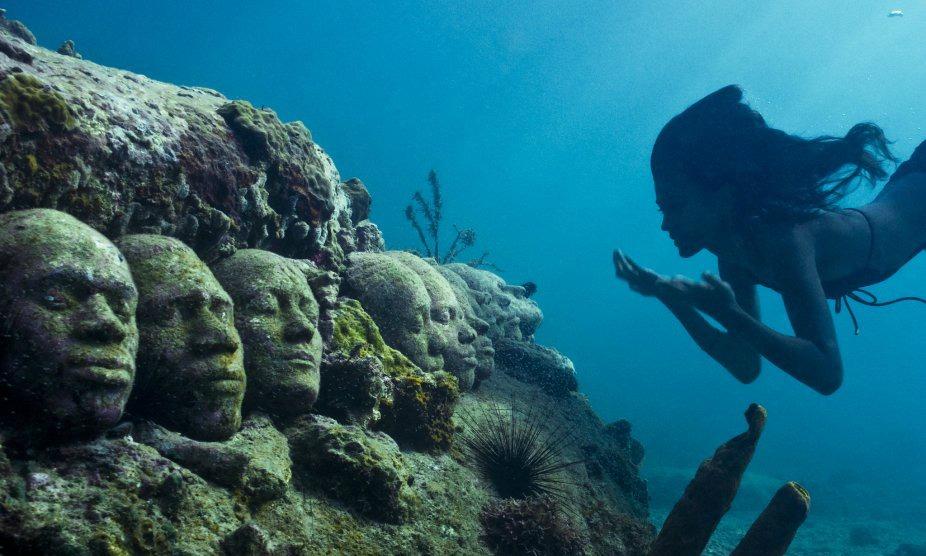Diving Deep for Site-Specific Art
Making the trek to site-specific artworks like Walter De Maria’s “The Lightning Field,” Maya Lin’s “Storm King Wavefield,” or Robert Smithson’s“Spiral Jetty” folds the journey of gettingtothe art into theexperience of the art itself. That’s part of the reason why so many art lovers go on pilgrimages to places like Marfa, Texas. But, remote as it might be, most site-specific art doesn’t require an oxygen tank.
Jason deCaires Taylor’s sculptures are on public display — they just happen to be on display underwater. Some of his concrete-cast pieces, like“The Listener,” are in water shallow enough for snorkelers to see the sunken statues. But others are so deep that they’re really only visible to scuba divers. Dozens of Taylor’s sculptures are part of a huge underwater installation called MUSA (Museo Subacutico de Arte) near Cancun, Mexico.
Taylor studied fine art, but he grew up scuba diving and being fascinated by underwater photography. His sunken sculptures marry his interests: they’re both art and artificial reefs, providing homes for marine plants and animals. Taylor wants his work to encourage ecotourism and to help buoy the biomass in our oceans. In some sculptures, like “Man on Fire,” below, Taylor even seeds bits of coral in his work. Over time, the natural flora grows to cover each piece, transforming the sculpture.
You can see more of his incredible photography and sculpture below, and all of his workon his website.
